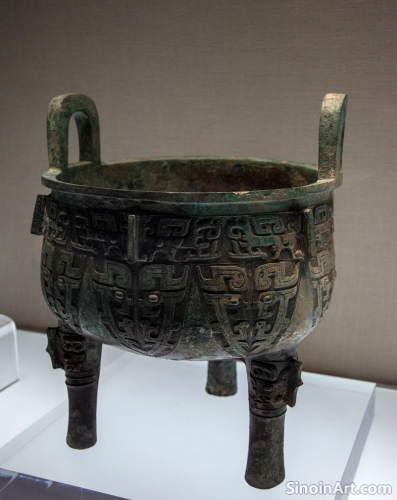The Use of Bronze in Ancient Chinese Maritime Activities: Navigation, Trade, and Exploration
|
While often associated with land-based power and ceremony, bronze also played a role in ancient Chinese maritime activities, used to create components for ships, navigational tools, and items associated with sea trade and exploration, underscoring the importance of bronze in the development of ancient maritime technology and practices. The blending of bronze and seafaring tradition is a key element in the history of the region.  Bronze was used to create fittings and anchors for ships and boats, increasing their durability, stability, and resistance to the elements. The use of bronze for these purposes helped to make ancient vessels stronger and more reliable. The integration of bronze into maritime technology helped to enhance exploration and trade routes.  Bronze was also used to create compasses and other navigational instruments, which were essential for charting sea routes and ensuring the safe passage of ships across the oceans. The ability to chart and navigate was an essential component of long distance exploration and trade. These bronze instruments helped to create a more reliable and efficient method of long distance maritime travel.  The exchange of bronze objects along maritime trade routes also facilitated cultural exchange and economic development, connecting different regions of China and facilitating interaction between diverse cultures. The movement of goods and people also helped to spread information and new ideas. These trade routes helped to create a more interconnected and globalized ancient world. The study of bronze in ancient Chinese maritime activities helps to reveal the importance of seafaring trade and the technological ingenuity used in exploring new lands. The connection between exploration, trade, and technological innovation is a key element in ancient Chinese history. |
Tag : bronze maritime, ancient navigation, Chinese seafaring, shipbuilding, nautical tools
Related information
- The Future of Bronze Ware Studies: New Research Methods and Technologies
- The Production and Use of Bronze in Ancient Chinese Musical Instruments: Harmony and the Cosmos
- Bronze Mirrors as Tools of Divination and Magic in Ancient China
- Bronze Ware and the Development of Ancient Chinese Writing: Scripts, Inscriptions, and the Communication of Ideas
- The Evolution of Bronze Bell Design in China: From Simple Forms to Complex Chimes
This article explores the future of Chinese bronze ware studies, highlighting the use of new research methods and technologies, including advanced imaging, 3D modeling, isotopic analysis, and interdisciplinary approaches, which promise to enhance our understanding of these artifacts.
This article explores the use of bronze in ancient Chinese musical instruments, highlighting the technical skill involved in their creation, the cosmological beliefs they represent, their role in ritual practices, and the interplay between music, spirituality, and the material world.
This article explores the use of bronze mirrors as tools of divination and magic in ancient China, highlighting their perceived spiritual powers, their role in rituals and protective practices, and the insights they offer into ancient Chinese beliefs.
This article explores the connection between bronze ware and the development of ancient Chinese writing, highlighting the evolution of script styles through inscriptions, the importance of writing as a medium for record-keeping and communication, and the role of bronze in shaping the development of written language.
This article explores the evolution of bronze bell design in China, highlighting the transition from simple bells to complex bianzhong chimes, the development of tuning techniques, and their significance in both music and ritual.